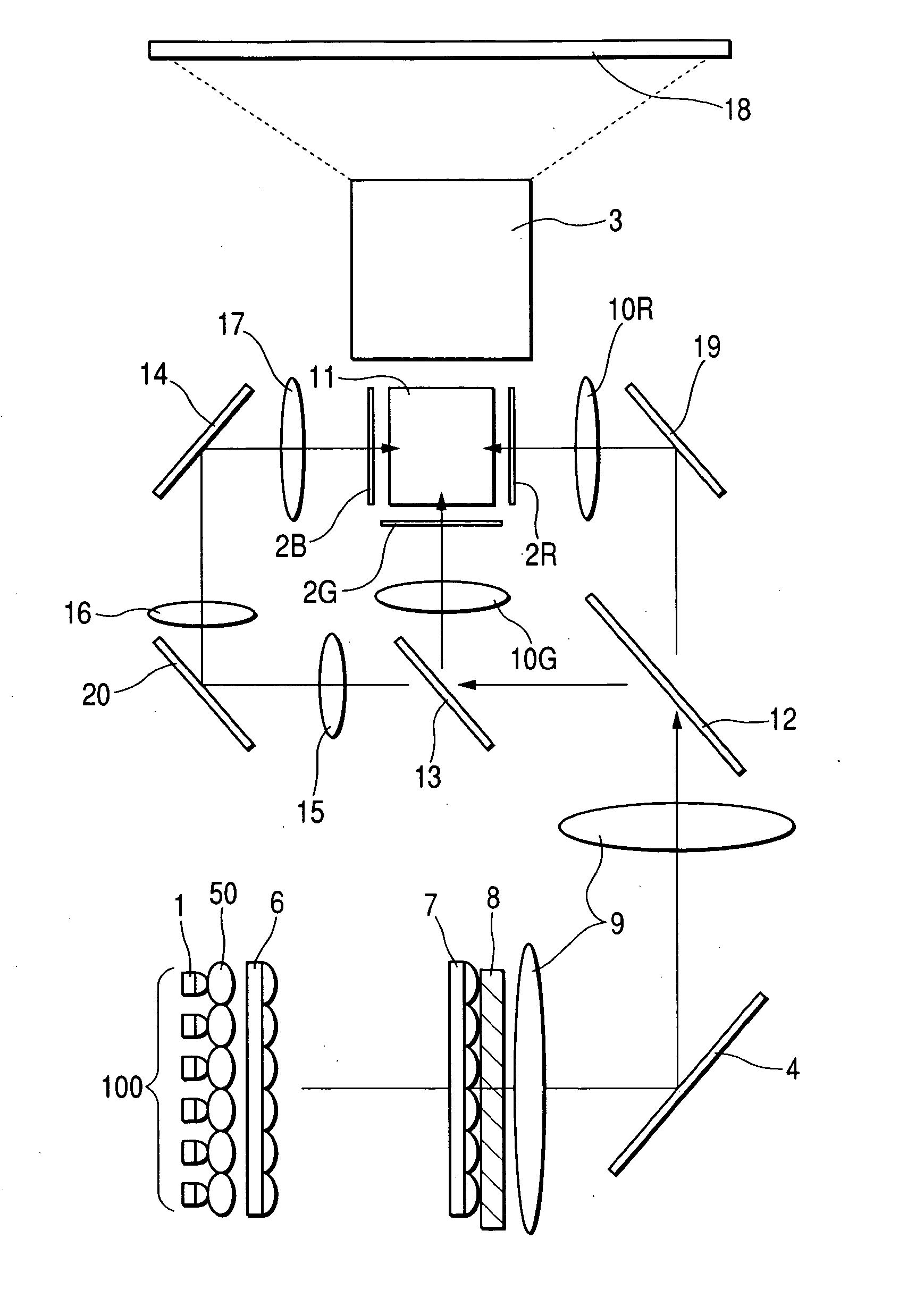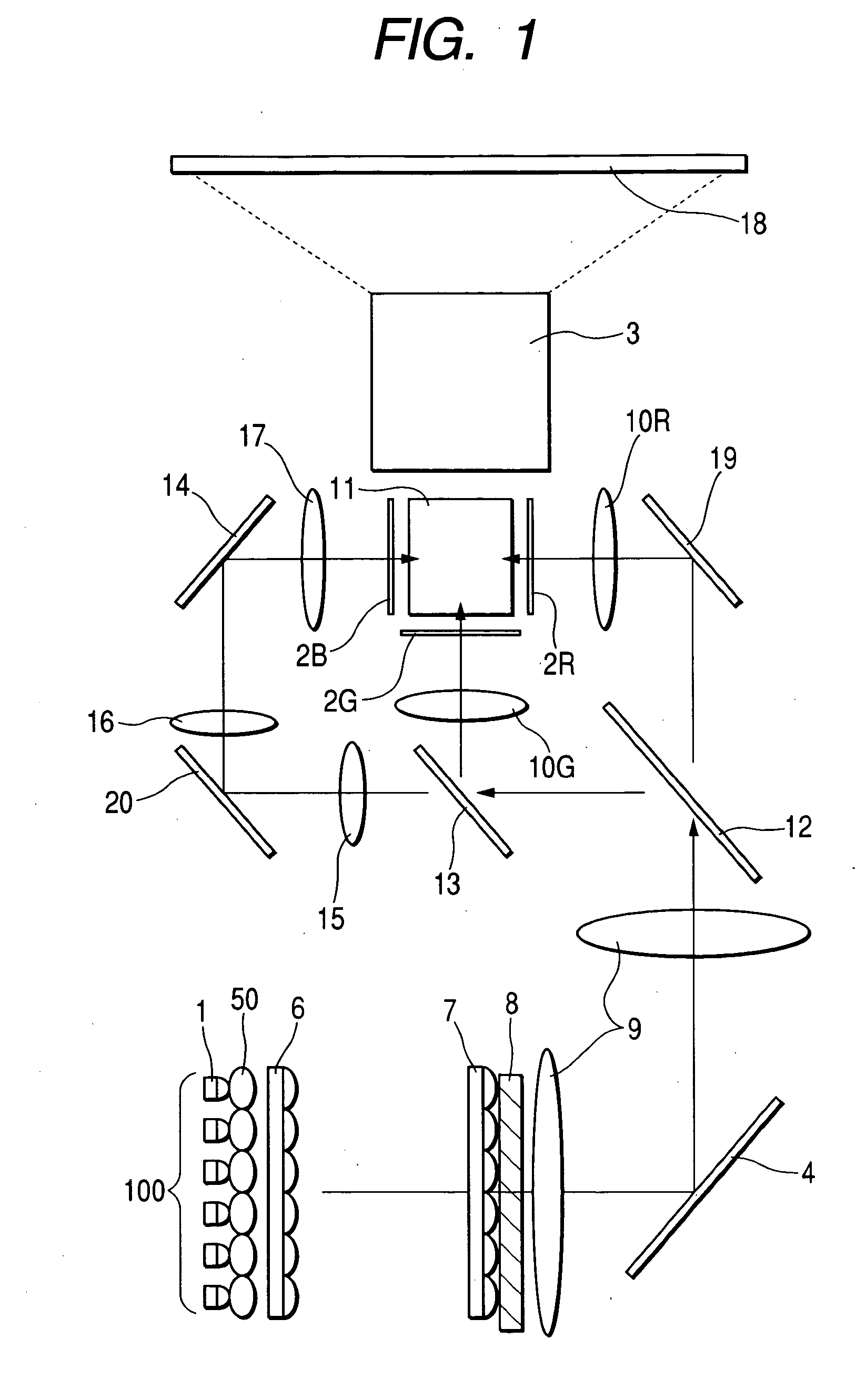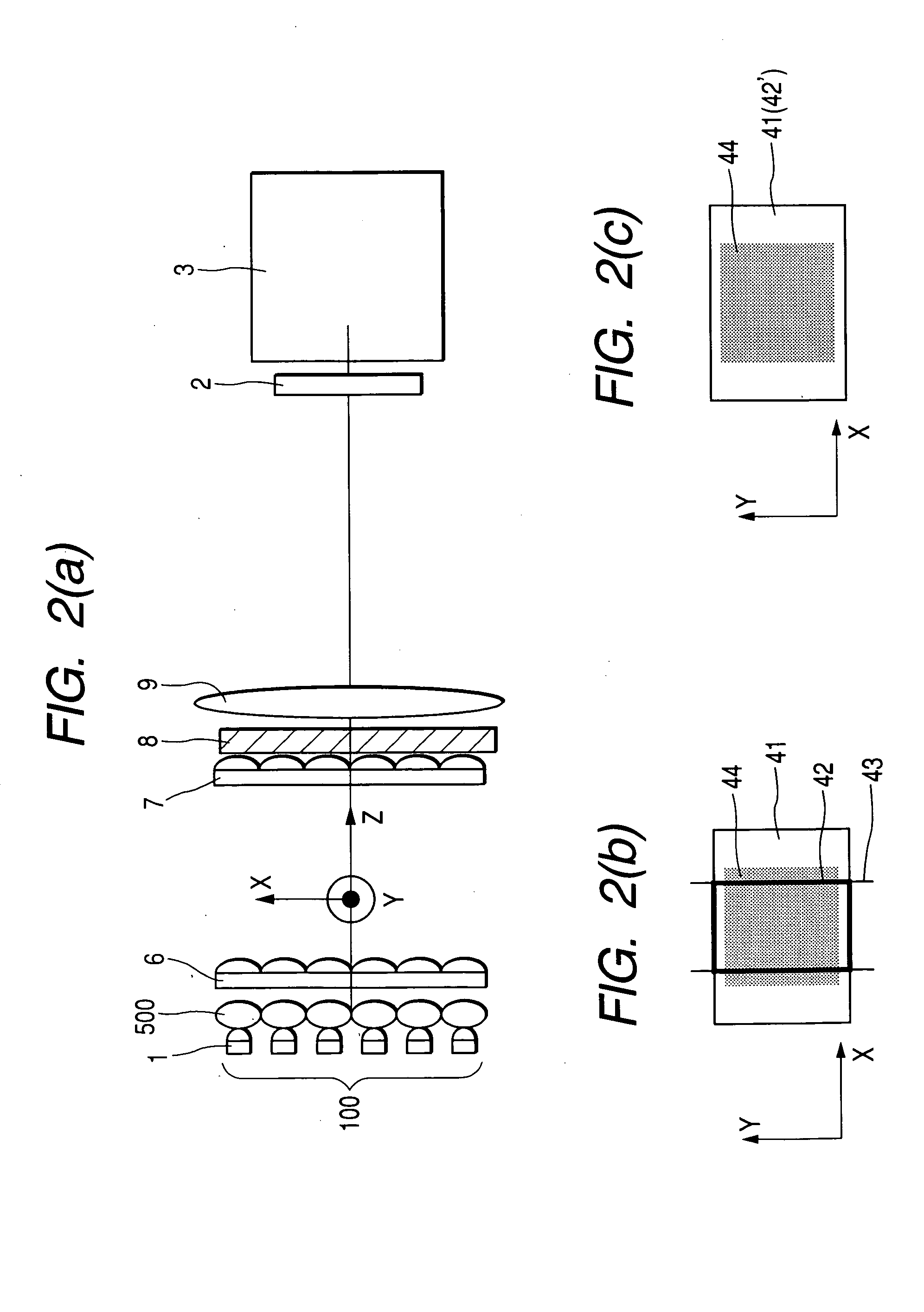Image display apparatus
a technology of image display and apparatus, which is applied in the direction of lighting and heating apparatus, television systems, instruments, etc., can solve the problems of reducing affecting unable to achieve the effect of improving so as to improve the efficiency of the illumination optical system, increase the amount of light passage, and improve the effect of the efficiency of the image display apparatus
- Summary
- Abstract
- Description
- Claims
- Application Information
AI Technical Summary
Benefits of technology
Problems solved by technology
Method used
Image
Examples
first embodiment
[0027]FIG. 1 is a diagram showing a configuration of a projection image display apparatus as a first embodiment of the present invention.
[0028] In FIG. 1, reference number 1 denotes an LED element having a light-emitting diode (LED) portion, and 100 a light source unit formed as a two-dimensional array of plural LED elements 1. Each LED element 1 has a collimator lens 50 for condensing light divergent from an LED portion (not shown) of an LED chip and introducing the light into an optical system for illumination. The collimator lens 50 forms anamorphic optics. Symbols 2R, 2G, and 2B denote transmissive liquid-crystal panels that are image display elements associated with the three primary colors of light, namely, red, green, and blue, respectively. Hereinafter, red light, green light, and blue light are referred to as R-light, G-light, and B-light, respectively. These liquid-crystal panels activate an image signal driver (not shown) to perform light intensity modulations responsive...
second embodiment
[0055] Although the above first embodiment uses the LED elements 1 adapted to directly emit light forward, a second embodiment employs reflective LED elements that each emit light forward after reflecting via a reflector the light emitted from an LED portion of the LED element. In addition, the reflector of the reflective LED element and a collimator lens disposed in front thereof constitute anamorphic optics. Thus, the light source image of the reflective LED element that is formed near the exit side of a second lens array 7 is endowed with a shape that almost agrees with a vertically long rectangular shape of an aperture 42 formed under restrictions on a range of incidence in a transverse direction at a unit prism unit of a polarizing conversion element 8.
[0056]FIG. 5 is a diagram showing a second embodiment of anamorphic optics. The anamorphic optics shown in the present embodiment is used in lieu of the anamorphic optics constituted by the collimator lenses 50 in the first embo...
third embodiment
[0062] Another example of using reflective LED elements is described as a third embodiment of the present invention below.
[0063] In the above second embodiment using reflective LED elements, a light source is constituted by each reflective LED element and a reflector provided at a rear side thereof, and anamorphic optics is constituted by the reflector and a collimator lens provided in front of the light source. In the present third embodiment, however, each reflective LED element has an integrally formed reflector at its rear side, a collimator lens provided in front is formed of the light-transmissive transparent resin used to seal a light-emitting portion of the reflective LED element, and anamorphic optics is constituted by the collimator lens formed of the foregoing transparent resin, and by the reflector.
[0064]FIG. 6 is a diagram showing the anamorphic optics used in the above third embodiment. A projection image display apparatus similar to that of the first embodiment is c...
PUM
 Login to View More
Login to View More Abstract
Description
Claims
Application Information
 Login to View More
Login to View More - R&D
- Intellectual Property
- Life Sciences
- Materials
- Tech Scout
- Unparalleled Data Quality
- Higher Quality Content
- 60% Fewer Hallucinations
Browse by: Latest US Patents, China's latest patents, Technical Efficacy Thesaurus, Application Domain, Technology Topic, Popular Technical Reports.
© 2025 PatSnap. All rights reserved.Legal|Privacy policy|Modern Slavery Act Transparency Statement|Sitemap|About US| Contact US: help@patsnap.com



